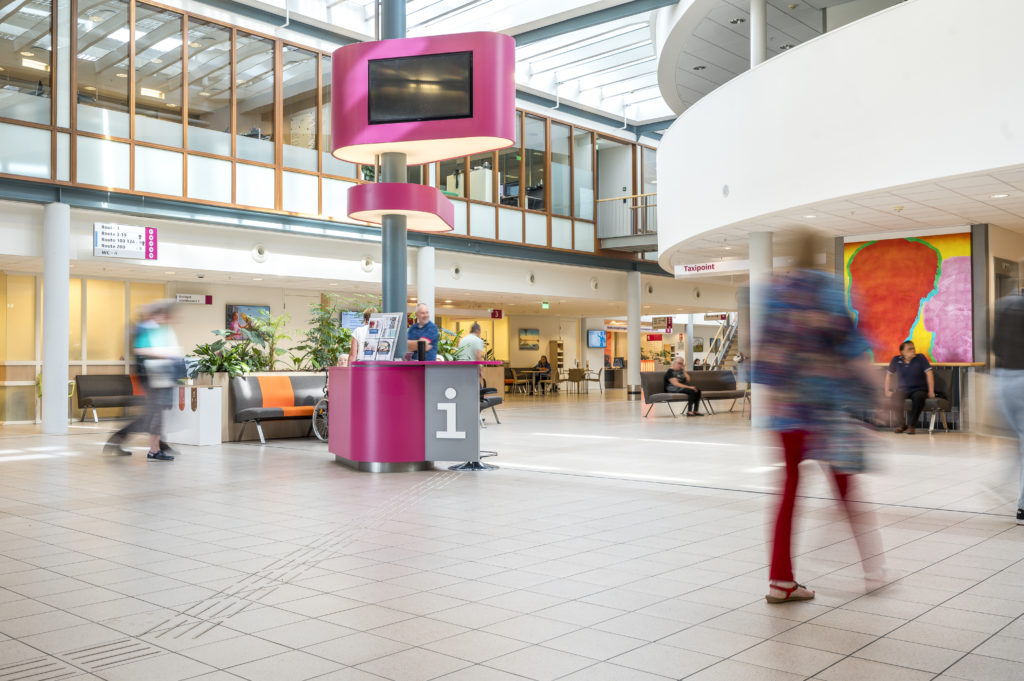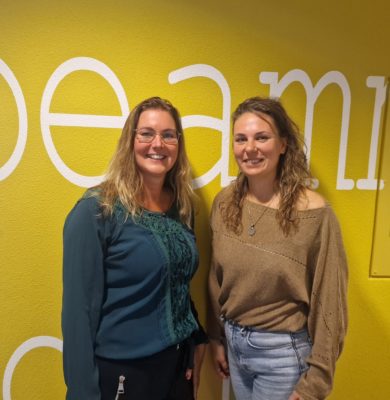Innovatie en samenwerking in het Deventer Ziekenhuis

Afbeelding: © Deventer Ziekenhuis
Michiel’s persoonlijke motivatie komt voort uit zijn eigen ervaringen als patiënt en zijn overtuiging dat begrip en eigenaarschap essentieel zijn voor succesvolle zorg.
“Van de 6600 uur in een jaar zie ik mijn specialist slechts 40 minuten. In de overige uren moet ik het zelf redden. Begrijpelijke informatie is dan cruciaal,” zegt Michiel Dijkman.
Digitale voorlichting voor iedereen
Effectief informeren
In het Deventer Ziekenhuis staat samen beslissen hoog in het vaandel. Om dit echt mogelijk te maken moet een patiënt de informatie begrijpen. “Dat betekent dat we de patiënt moeten helpen om in de positie te komen om samen te beslissen”, legt Michiel uit. Medische taal is vaak te complex en lange teksten worden steeds minder gelezen. In de tijd van social media en korte video’s is er behoefte aan visuele en begrijpelijke voorlichting. “Dit past bij de manier waarop mensen vandaag de dag informatie verwerken”, aldus Michiel. Dit is extra belangrijk voor groepen met een taalbarrière of lage taalvaardigheid.
Belemmeringen overbrengen medische informatie
Het Deventer Ziekenhuis heeft een diverse patiëntenpopulatie waaronder een groot aantal laaggeletterden en niet-Nederlandssprekenden. Het ziekenhuis liep tegen beperkingen aan in het overbrengen van cruciale medische informatie. Traditionele methoden, zoals folders met lange teksten, bleken niet meer effectief.
Michiel benoemt: “11 procent van onze patiënten is laaggeletterd, en traditionele folders bereiken hen niet.”
Daarnaast werkten de verschillende poliklinieken grotendeels op zichzelf, wat leidde tot interne inefficiënties en communicatieproblemen.
Keuze voor Indiveo
Om deze uitdagingen aan te pakken, koos het Deventer Ziekenhuis voor Indiveo. Korte animaties (Divi’s) met eenvoudige B1 taal en duidelijke visuals maken medische informatie toegankelijk voor iedereen. Patiënten kunnen deze op hun eigen moment en mobiel, tablet of computer bekijken, waardoor de drempel wordt verlaagd en de zelfregie wordt versterkt.

Afbeelding: © Deventer Ziekenhuis
De aanpak richting effectief informeren en samen beslissen
Het ziekenhuis implementeerde een strategie gebaseerd op drie pijlers:
Digitalisering
Door gebruik te maken van technologieën zoals Indivio, werd medische informatie omgezet in begrijpelijke en visueel aantrekkelijke formats, ook wel Divi’s (digitale-video-module) genoemd. Er werd bewust gekozen voor Indivio vanwege de focus op eenvoudige, laagdrempelige informatievoorziening. Michiel benadrukt: “Indivio helpt niet alleen met begrijpelijke informatie, maar voorkomt ook dat patiënten hun antwoorden zoeken bij onbetrouwbare bronnen”.
Samenwerking
Michiel introduceerde de term “poliklinisch bedrijf” waarbij poliklinieken gestimuleerd werden samen te werken en als één ‘bedrijf’ te gaan opereren. Door de afdelingsmanagers de verantwoordelijkheid te geven over meerdere poliklinieken, worden grenzen tussen afdelingen doorbroken. Dat bevordert een gedeelde verantwoordelijkheid. Door een gezamenlijke taal te creëren en consequent te spreken over het ‘poliklinisch bedrijf’, verdween het individuele karakter van de afdelingen en kwam de focus op het geheel te liggen.
Betrekken van alle lagen
Bij de introductie van Indiveo is een stapsgewijze aanpak belangrijk, geeft Michiel aan: “Door veranderingen in kleine stappen te introduceren, hebben mensen tijd om het bij te houden en eraan te wennen”. Rondom Indiveo werden collega’s in het ziekenhuis actief betrokken om mee te denken en te beslissen. Daarnaast werden er werkgroepen opgericht en in alle fasen goed onderzocht wat leeft op de afdelingen, zodat daar op ingespeeld kon worden. Daarbij liet hij de medewerkers actief participeren in de besluitvorming.

“Patiëntenzorg straalt af op hoe zorgverleners met de patiënten omgaan. Als patiënt moet het niet zo zijn dat de zorg je overkomt. “Je moet in gesprek kunnen met de zorgprofessional, omdat de patiënt niet die kennis heeft, moeten wij onze informatievoorziening aanpassen aan de patiënt.”
Michiel Dijkman, Bedrijfskundig manager van het Deventer Ziekenhuis
De impact van deze aanpak is al duidelijk merkbaar
Toegankelijkheid
Het gebruik van Divi’s (digitale-video-module) van Indiveo, heeft de informatievoorziening voor patiënten aanzienlijk verbeterd. “Je moet nadenken over hoe je die groep mensen bereikt,” benadrukte Michiel.
Efficiëntie
Door processen te centraliseren en te digitaliseren, werden kosten bespaard en administratieve lasten verlicht. Michiel: “Als het lukt om die poliklinieken als één bedrijf te laten werken, zit daar zoveel efficiëntiewinst in.”
Tevredenheid
Zowel patiënten als medewerkers ervaren meer duidelijkheid en betrokkenheid. Medewerkers werden actief betrokken bij besluitvorming, wat leidde tot meer draagvlak voor veranderingen.
Samen beslissen in de zorg begint bij begrijpelijke informatie
Een patiënt kan pas écht meedenken en keuzes maken als hij de situatie volledig begrijpt. Hoe beter de informatie, hoe beter de voorbereiding en hoe groter het vertrouwen om mee te beslissen. Het gaat niet alleen om wat we als zorgprofessionals zeggen, maar vooral om wat de patiënt daadwerkelijk begrijpt. Want pas als de patiënt de impact van zijn of haar keuzes snapt, kan hij regie nemen over de eigen gezondheid.
Toch bestaat er een kloof tussen de medische taal van de arts en het begrip van de patiënt. Wat voor zorgprofessionals vanzelfsprekend is, kan voor een patiënt overweldigend en onbegrijpelijk zijn. Dat is logisch: wie dagelijks in een ziekenhuis werkt, verliest het perspectief van een patiënt. Daarom is het cruciaal om medische informatie toegankelijk te maken.
“Goede zorg begint bij begrip. Door patiënten begrijpelijk en effectief te informeren, geven we hen de handvatten om zelf de regie te nemen. Want samen beslissen kan alleen als iedereen begrijpt waar het over gaat “, concludeert Michiel.

Behaal ook resultaat met Indiveo
Neem contact op met Roana en maak kennis met Indiveo tijdens een demo.


